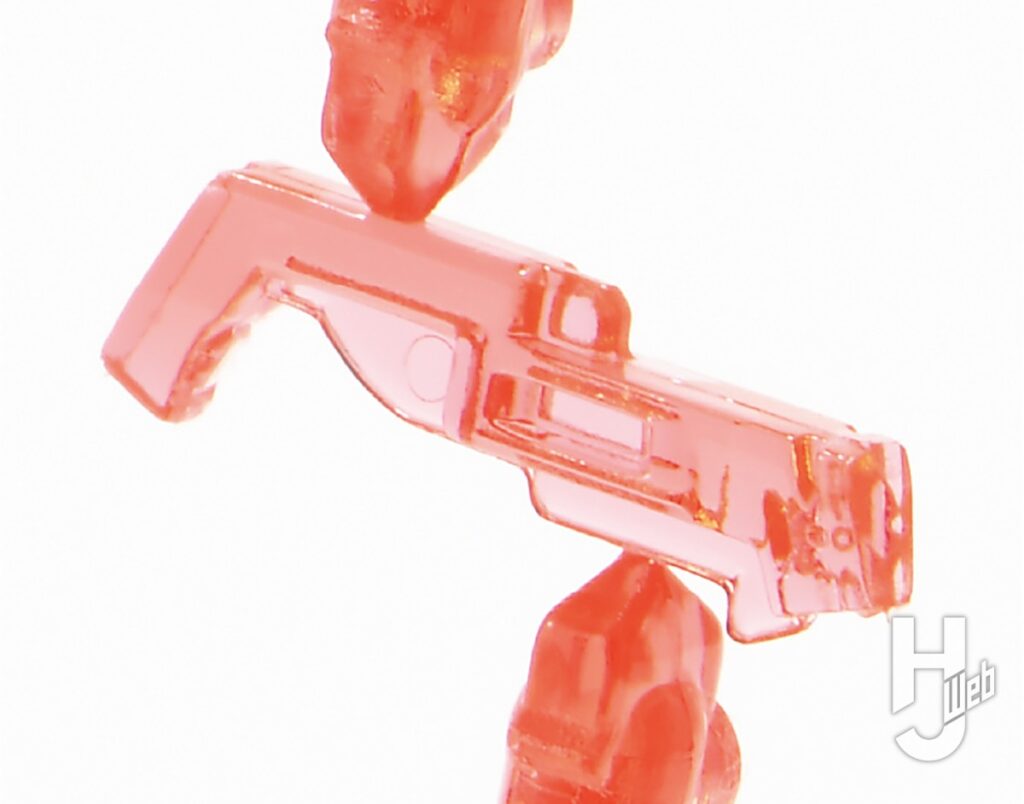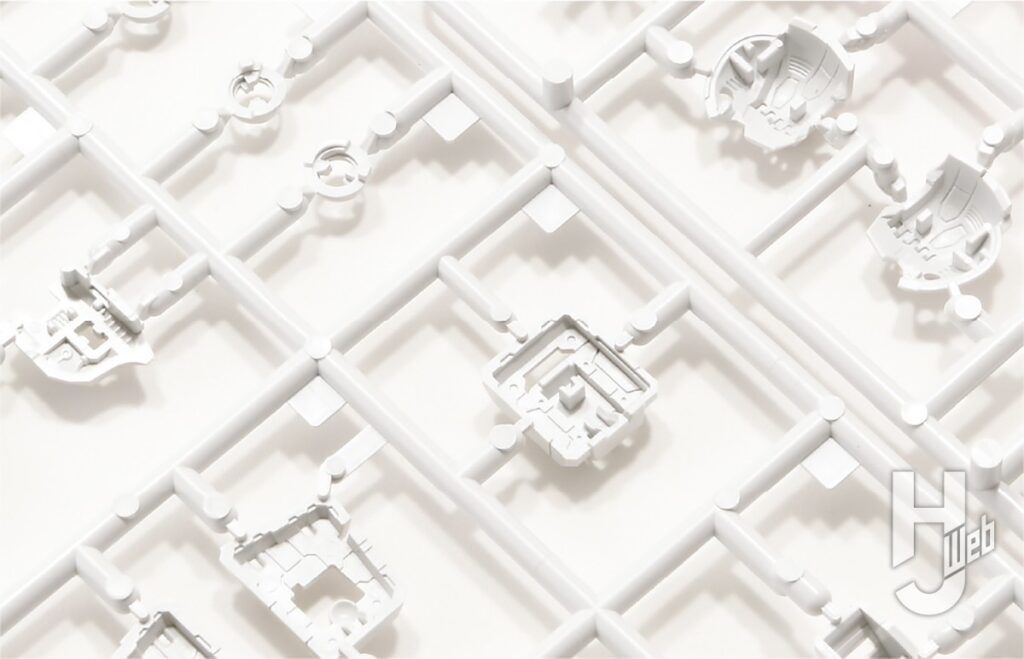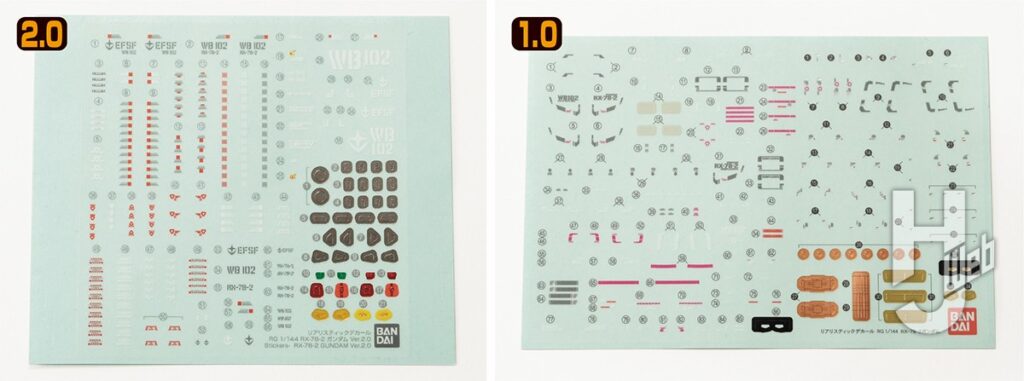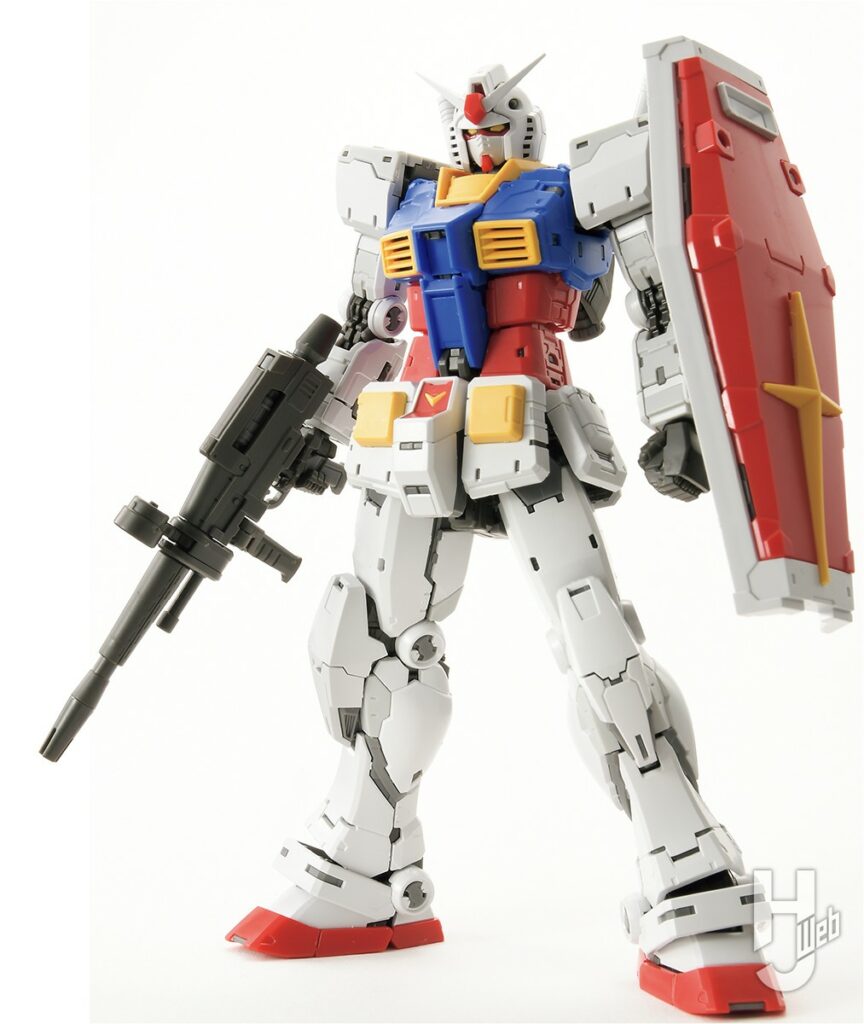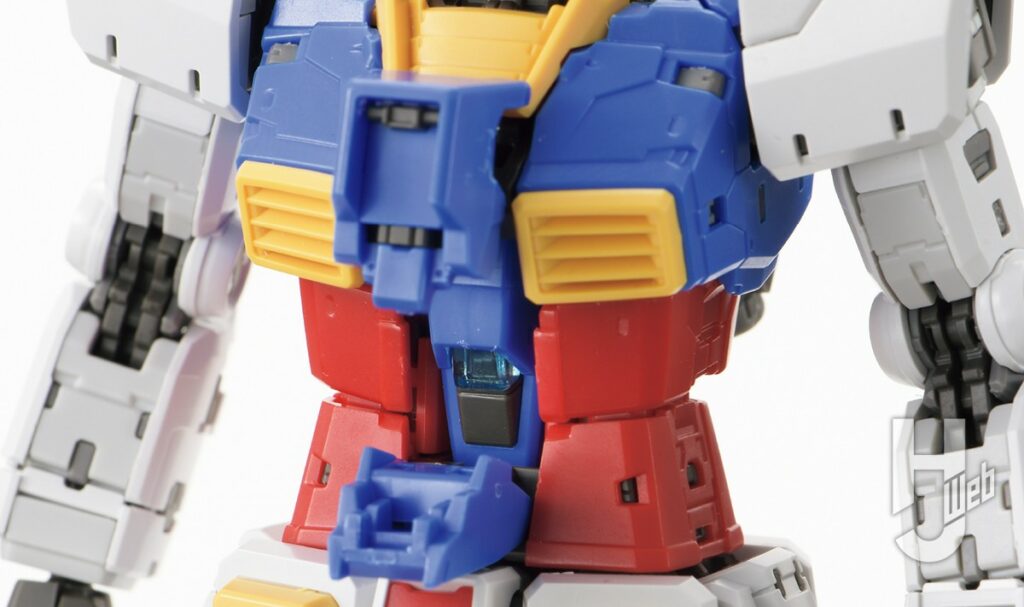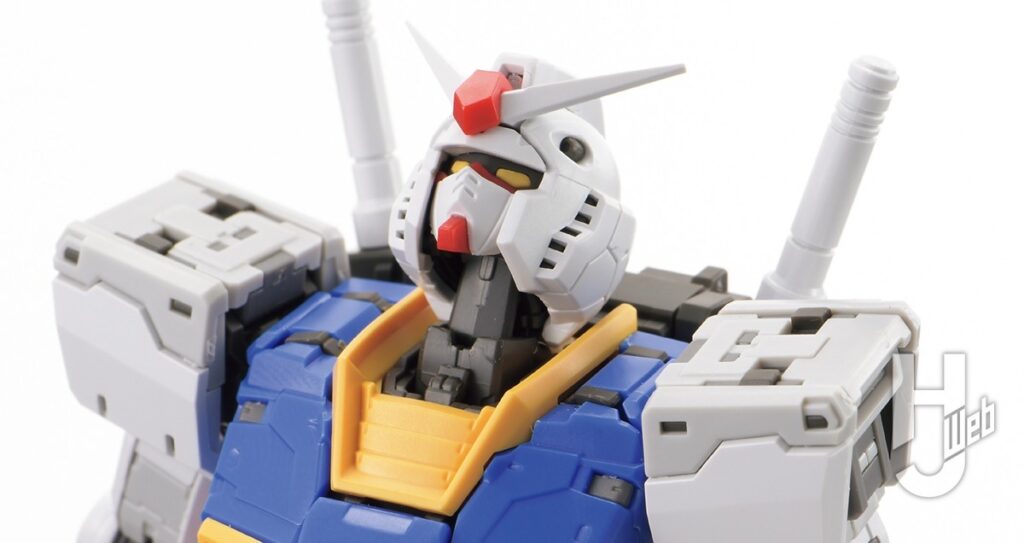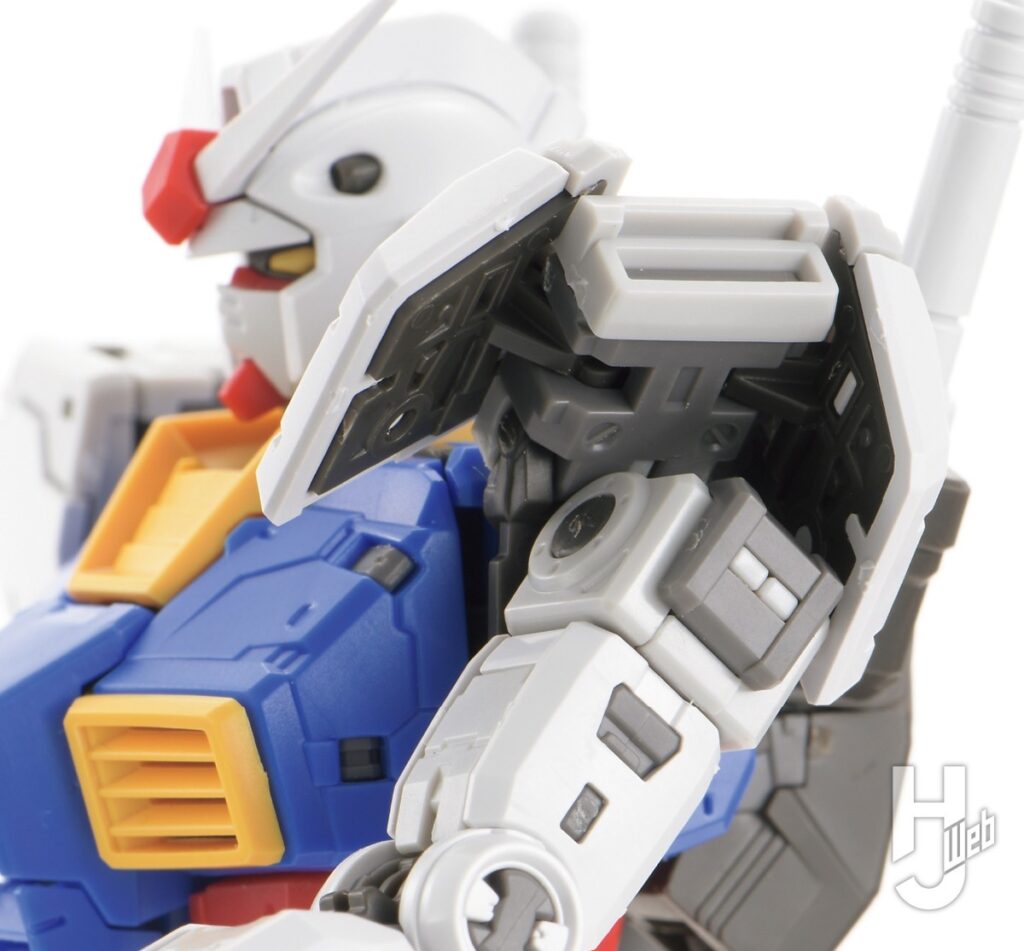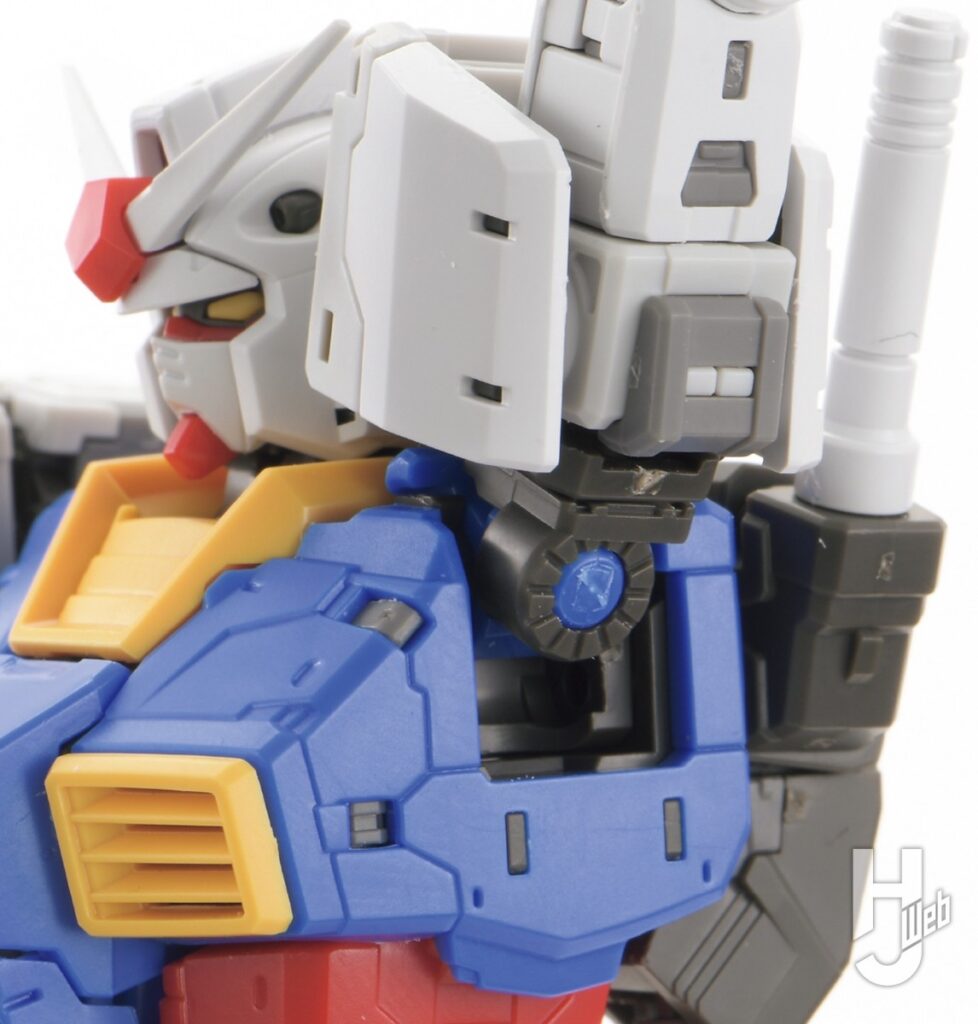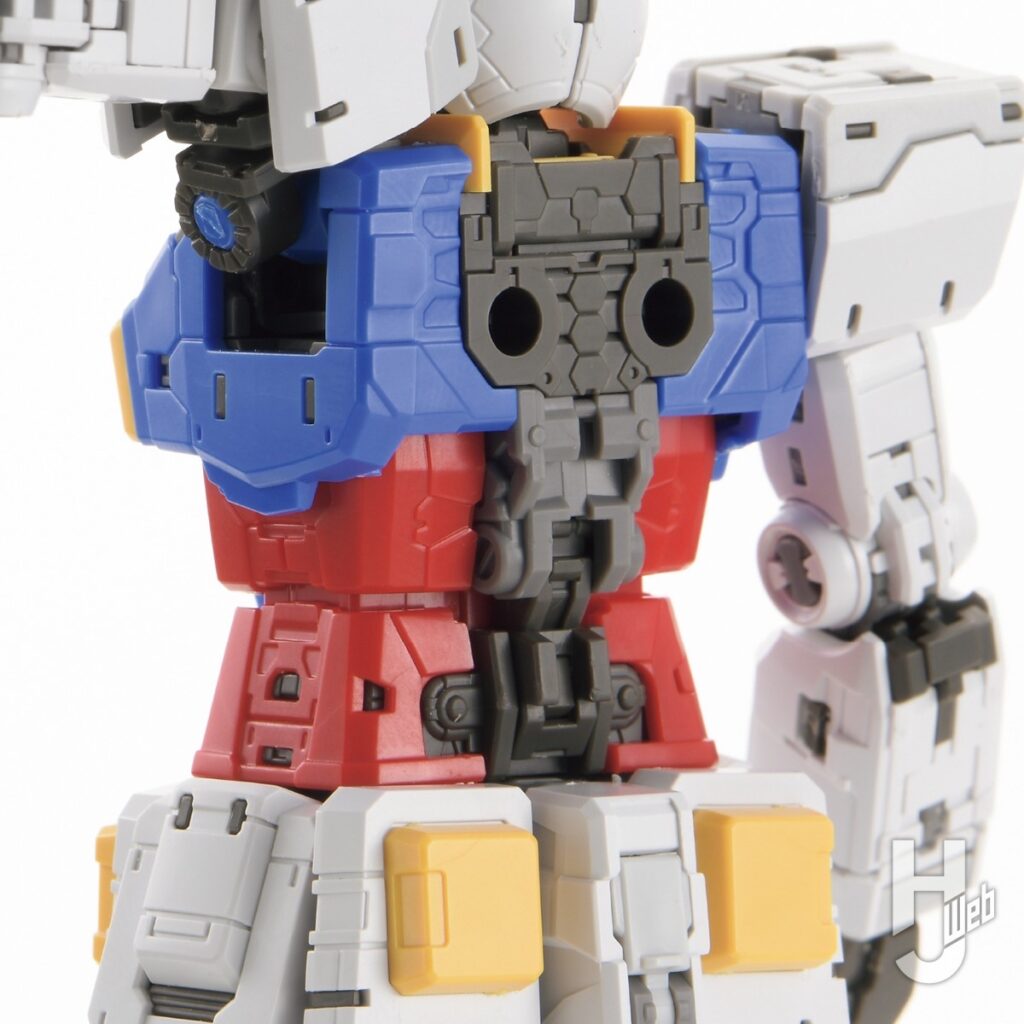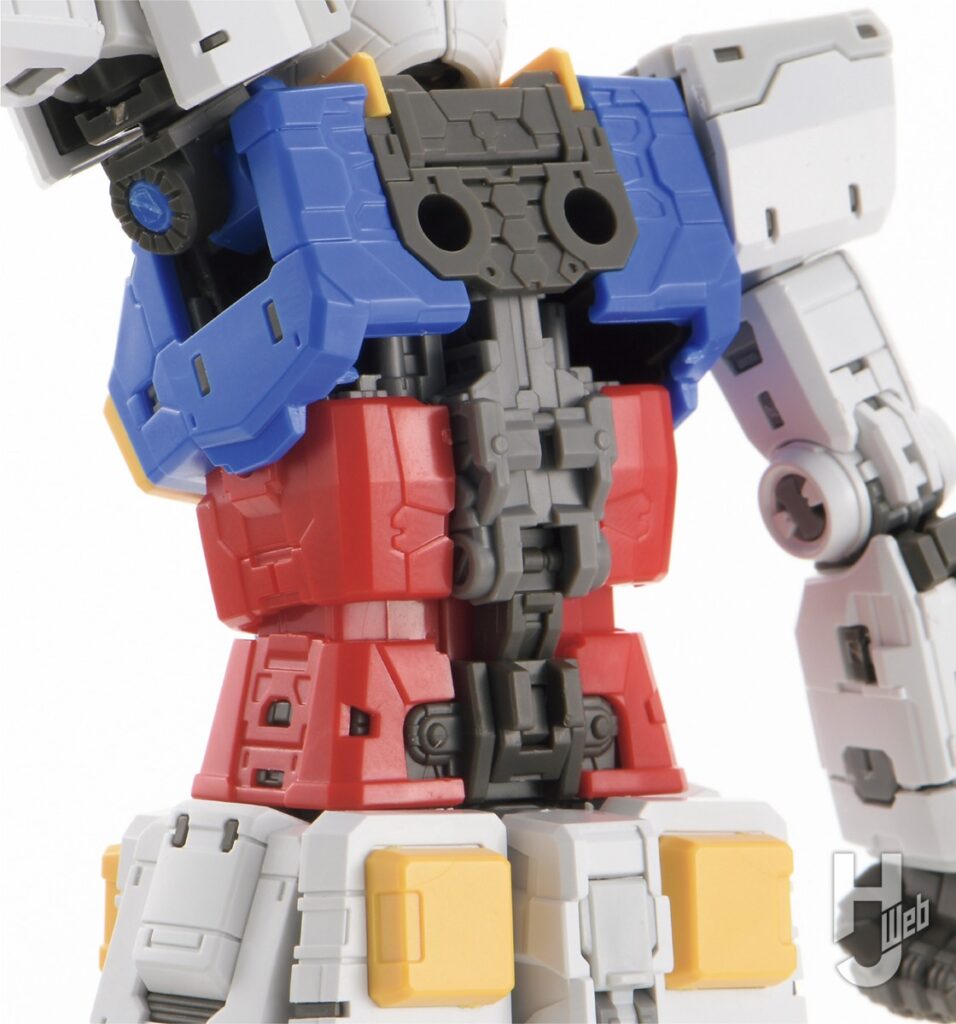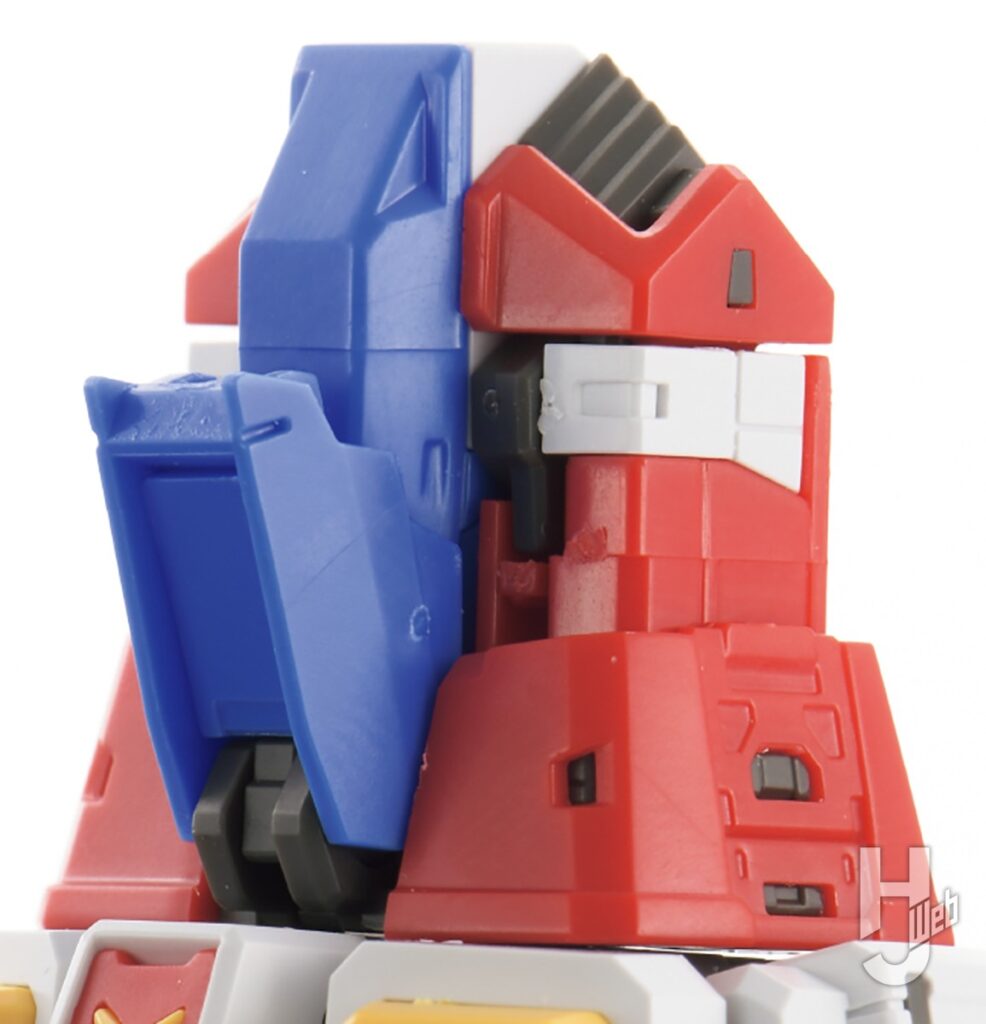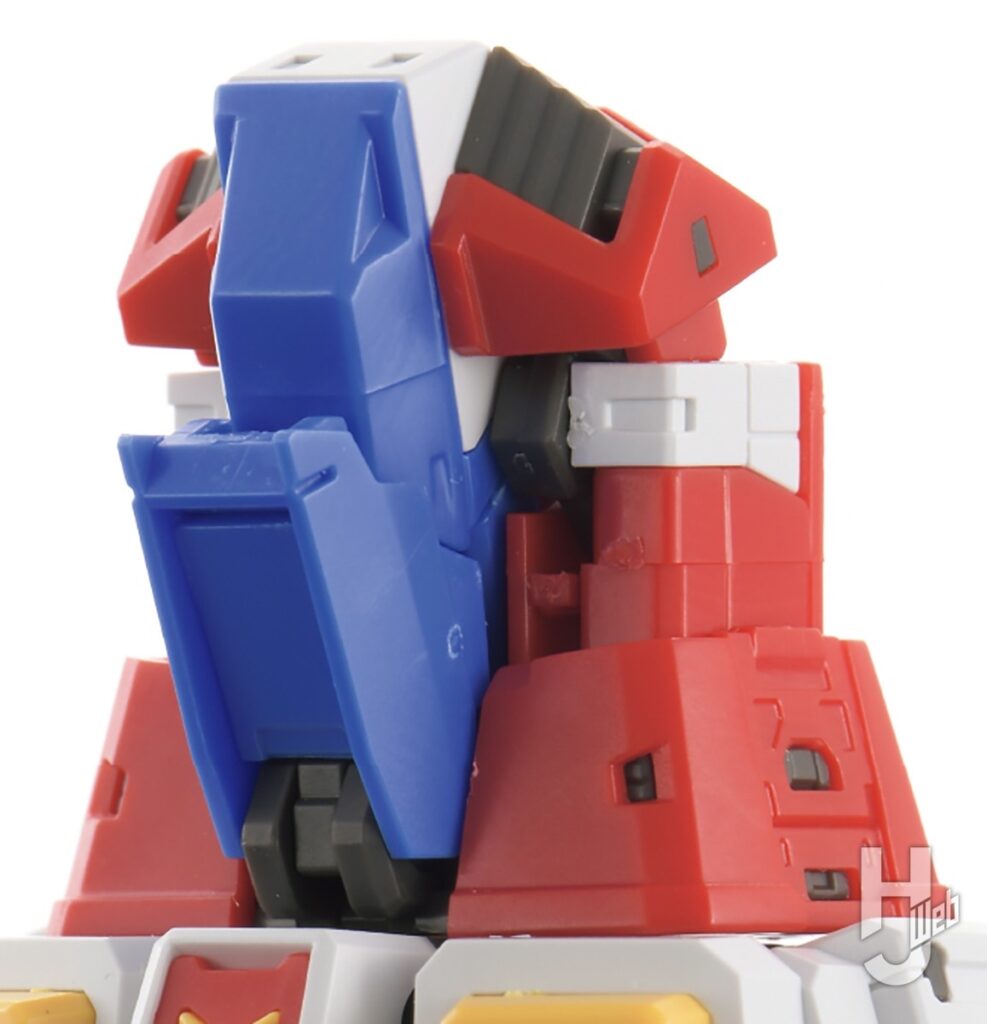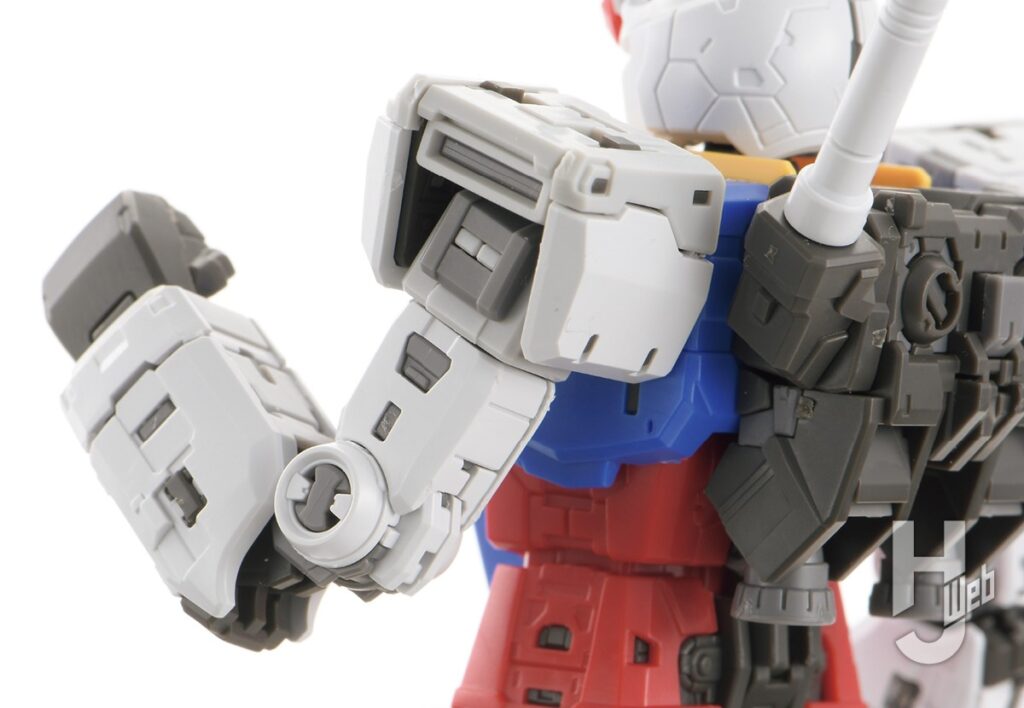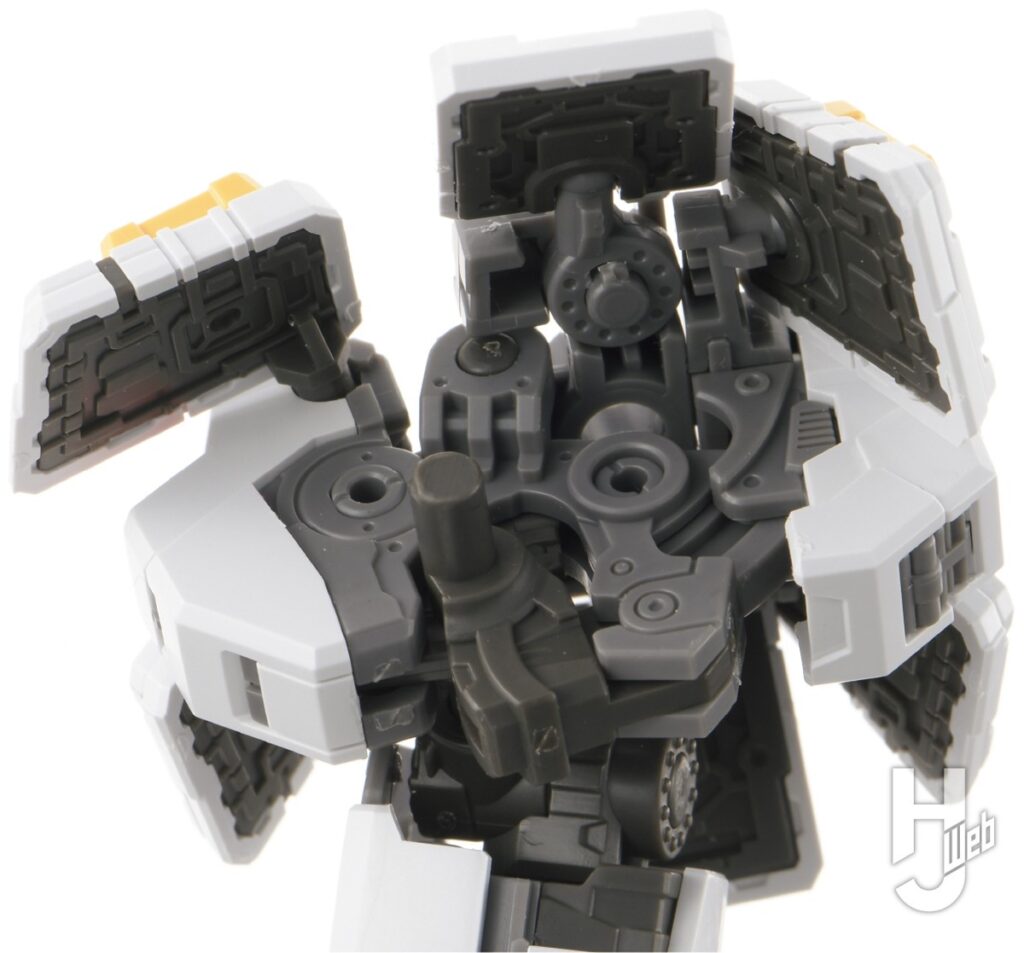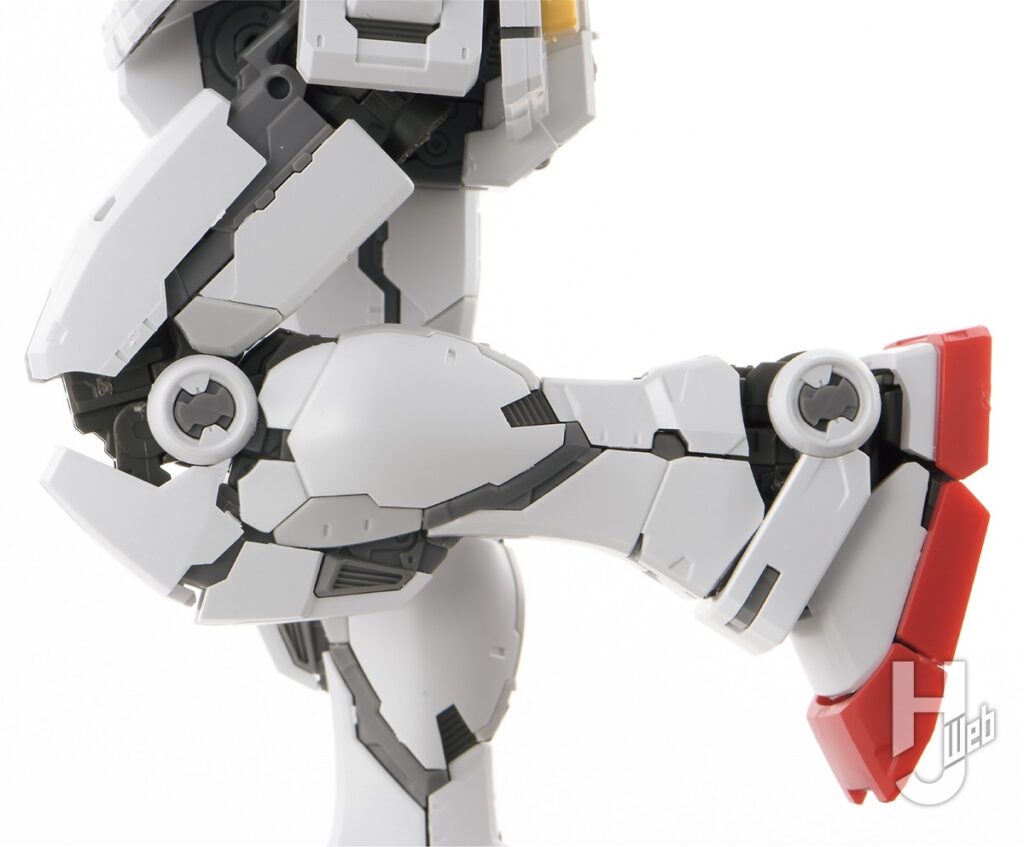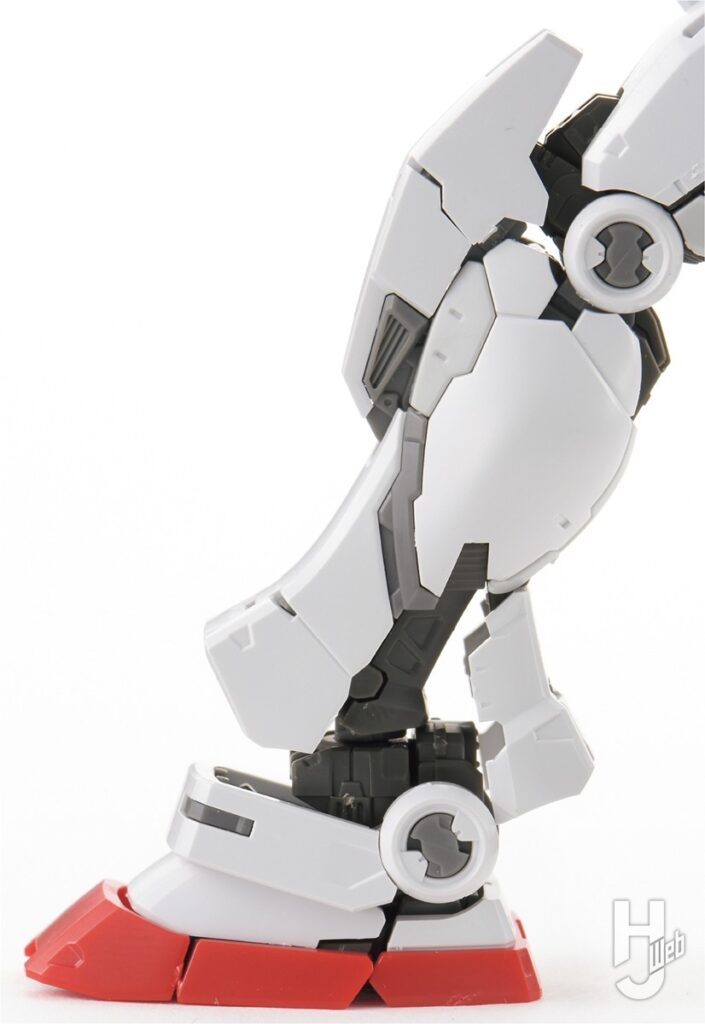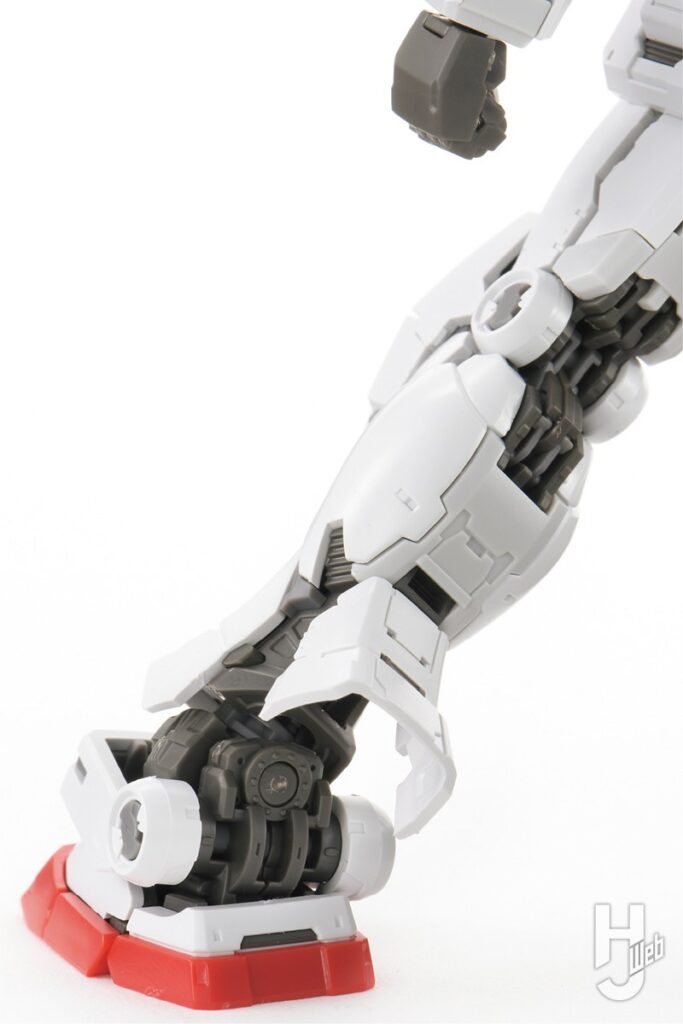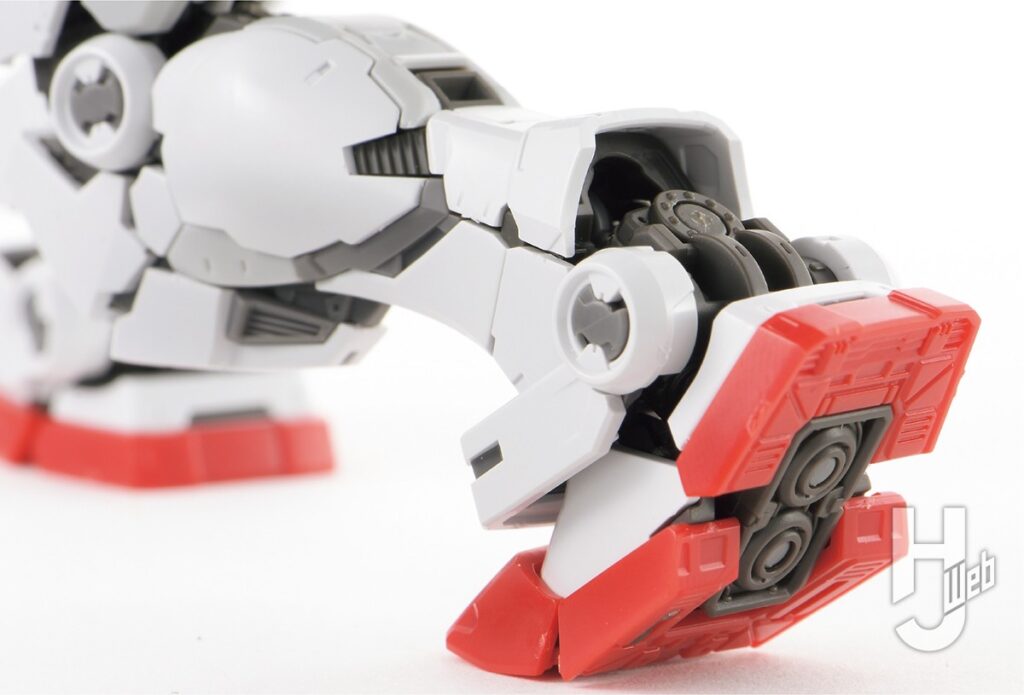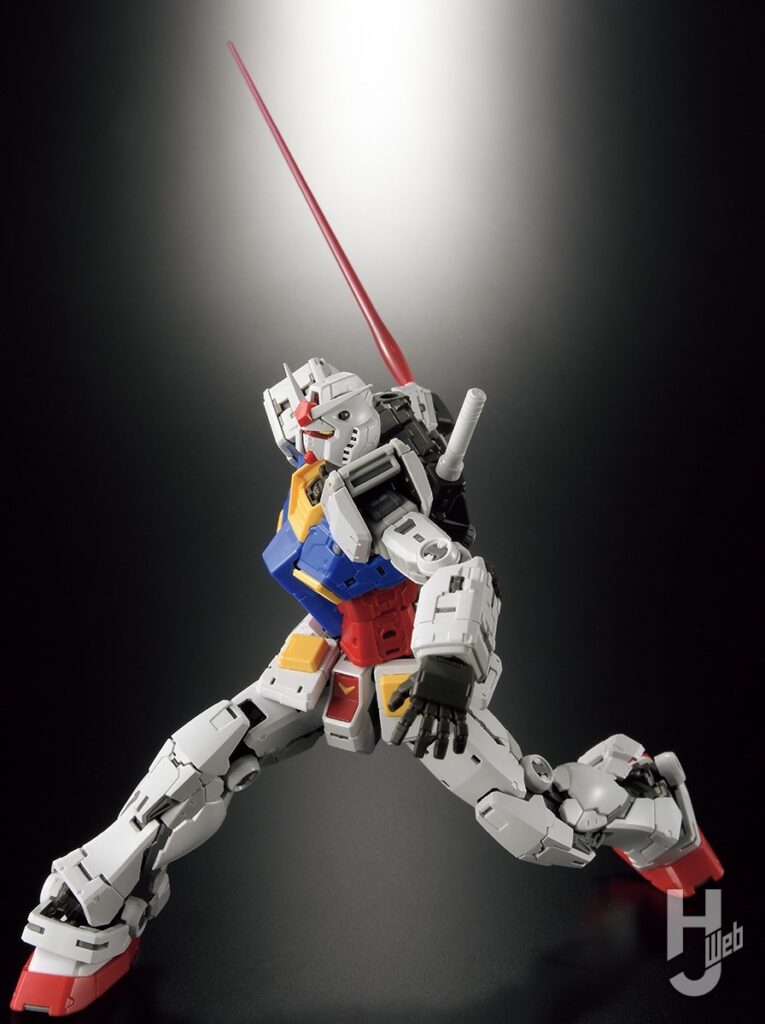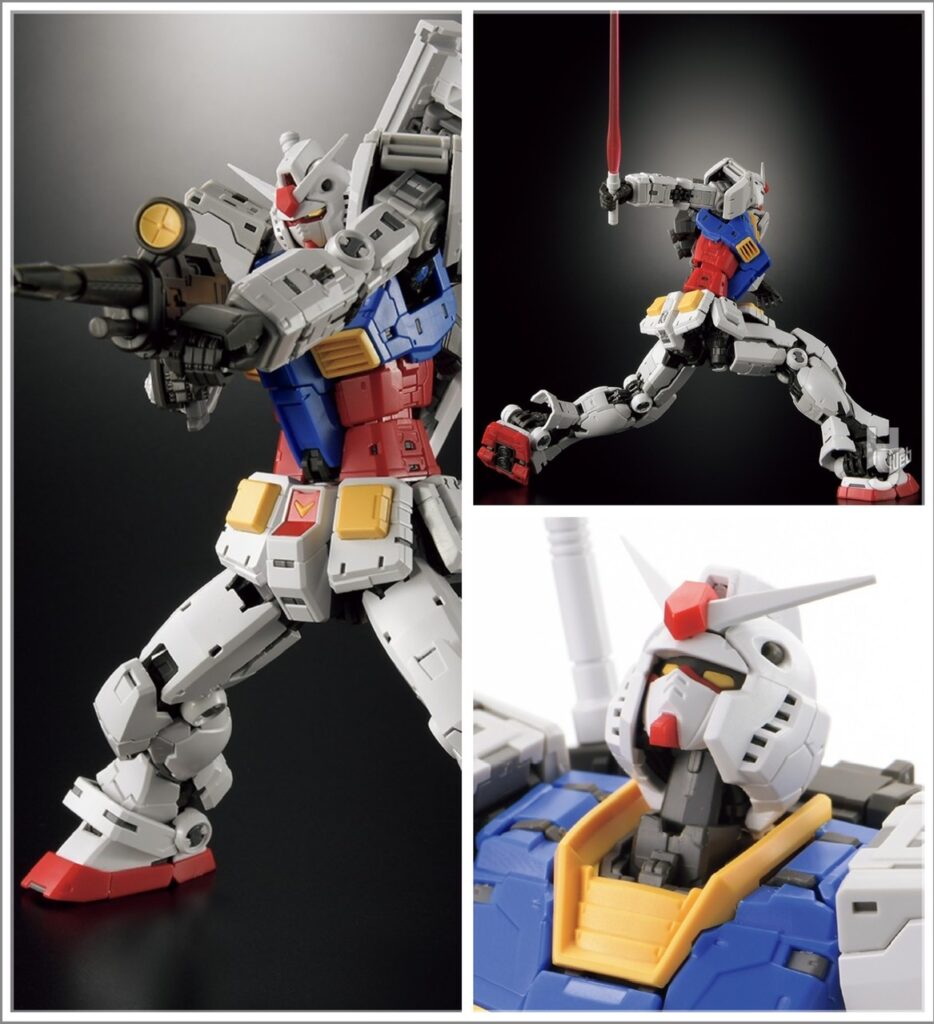
This is the first Official Review for the RG 1/144 RX-78-2 Gundam Ver.2.0 plus Bandai Spirits question and answer!
RG RX-78-2 Gundam Ver.2.0
Released by: BANDAI SPIRITS Hobby Division Creation Department
Price: 3,850 yen, scheduled for August 2024
1/144, approx. 13 cm
On the left is the Ver.2.0 runner, and on the right is the Ver.1.0 runner (a name for convenience). Ver.2.0 is made up of nine runners, while Ver.1.0 has ten. Notable features include the lack of the “Advanced MS Joint” made with multiple insert molding that has been used in previous RG series, and the lack of a process known as “double-hitting” that is used when molding symmetrical parts such as the arms and legs (the runners are engraved with E1, E2, etc.). This makes it easier to understand the part placement on the runners, making assembly easier.
This is a clear part for the main camera on the top of the head. It has a mold on the side, and when viewed from the front, the mechanical details stand out with depth.
The underside of the exterior, which will not be visible once completed, is engraved with intricate mechanical moldings, all of which are designed to fit the structure on the front side, creating an amazing design.
On the left is the Ver.2.0 realistic decal, and on the right is the Ver.1.0 realistic decal. Ver.1.0 used a lot of line decals, but Ver.2.0 includes a lot of cautions. You can see that the main camera and twin eyes are available in both flat and molded versions.
The form is sturdy and stable. The white exterior is made of a two-tone white and light gray to prevent the surface from becoming monotonous. The connection pins that secure the exterior to the internal frame function as exposed mecha molds, increasing the information density.
The head is precisely sculpted, with the Vulcan cannon, twin eyes, and ducts on the sides of the head. The mask ducts are molded with deep recesses, allowing the shape to be seen through the light and shadows. The chest ducts with frames are also rare for the 1/144 scale RX-78-2 Gundam.
The cockpit hatch can be opened and closed vertically in accordance with the movable structure of the fuselage, which will be described later.
The light grey part in the center of the backpack is an attachment for the shield mount. If you open the mold underneath it downwards, you will see the joint holes for the action base. If you remove the cover, you can see the internal structure, and even here you can see some meaningful internal structure, such as the gear-shaped mold at the base of the main thruster.
The neck has two axes, one above the other and one below, and a ball joint at the base, allowing for great upward movement.
The shoulder armor is independent of the arms, and the base and the front and back armor are each movable. This makes it possible to maintain the position of the shoulder even when swinging the arm widely, and the silhouette does not collapse during action.
The shoulder frame can swing widely forward, backward, and upward. In addition, the base of the shoulder armor is equipped with a vertical sliding mechanism, allowing the arm to stand vertically.
The torso can bend forward, but if you pull too hard the A-block will come loose. Taking this into consideration, a locking mechanism has been installed on the back. When moving, part of the frame extends, allowing the torso to bend forward while maintaining the locking mechanism.
The aforementioned forward bending movement is made possible by the movable mechanism in the core block. This mechanism allows for natural movement not found in previous items. Please also check out the movement of the lower part of the cockpit hatch mentioned above.
The elbow joint is designed to link the internal structure and design, and the round molded part that houses the field motor is designed to function as a joint. The lower part of the forearm has been added with a U-shaped bend. This slight movement has a big effect on the posing.
The waist frame incorporates a sliding mechanism at the base of the legs as well as a two-axis movement mechanism on the front and back. This movement allows the silhouette around the waist to be maintained when bending forward. The top of the frame where the side armor is connected can swing left and right, and the side armor connection part itself can also swing back and forth.
The thigh armor and knee armor can be separated and slid to accommodate the movement of the legs. The frame is kept as uncovered as possible while maintaining a human-like silhouette. In addition, the calf cover can be opened to allow the soles of the shoes to firmly touch the ground when the legs are pushed forward.
The sole of the shoe is made of a three-part structure, so the toes stay firmly on the ground even when you lower your hips. The left and right swing mechanism of the ankle, when used in conjunction with the opening and closing of the calf cover mentioned above, allows you to open your legs wide while keeping the shoe on the ground.
The scene in the first episode of “Mobile Suit Gundam” where the Zaku II’s cockpit is pierced with a beam sabre is a familiar sight. The difficult pose is possible with the legs spread wide and the shoes on the ground while holding the saber grip with both hands.
Using the movable mechanism we have explained so far, let’s try making it take an action pose. The motif is the scene in episode 19 of “Mobile Suit Gundam” where it bends down to dodge a blow from the Gouf, then straightens up and slices through both of its arms with a beam sabre. From head to toe, it has a natural pose with no strain. Looking at it from behind, you can clearly see the movement of its legs.
COMMENT
(BANDAI SPIRITS Hobby Division Development)
Q: Please tell us what you focused on in terms of the number of runners and the composition.
In terms of the composition, we focused on ease of assembly and the experience of assembling “Gundam” as a machine. For ease of assembly, we aimed to organize the runners as much as possible by part, so that it would be intuitive to understand which part goes where. In addition, by consolidating functions and designs into as few parts as possible and reducing the assembly process, you can see a very complex machine configuration when completed, but the assembly is not so complicated.
In assembling “Gundam” as a machine, we focused on the goal of being able to experience the image that Gundam must be built like when it is actually constructed. We were conscious of giving it a persuasiveness as a machine, such as a frame that resembles a semi-monocoque structure and an assembly that can hold firmly even when it is moved widely. In addition, as a challenge for RG, the assembly process of the arm and leg joints uses a movable structure with “interlocking” that is completely different from conventional ones. We hope that this will allow you to enjoy the Gundam assembly process in your creation, while also opening up new possibilities for Gunpla.
Q: The “RX-78-2 Gundam” has been made into a 3D model in various forms up until now, but what image was the basis for the shape of this item?
The Hobby Division has made over 40 RX-78-2 Gundams with completely new moldings so far. There have been Gundams with various shapes and specifications, from shapes that pursue the TV image to designs that are quite adventurous based on new interpretations. For the “RG 1/144 RX-78-2 Gundam Ver.2.0”, we looked back on the history of these various Gundams and considered what shape would be appropriate for this product. In conclusion, we aimed to create a shape that would allow you to feel the “Gundam” in the show, while also showing its 45 years of evolution from the outside. This time, we paid particular attention to the composition of each surface and the use of accent colors, and we tried to create a design that would look like a shadow was cast on the overall surface. This is intended to give the 1/144 scale model a life-sized presence of 18 meters.
Q: What did you focus on when constructing the movable mechanism for each joint?
As for the overall image of mobility, we proceeded with the design with the goal of being able to balance the poses from the 1979 anime with the current RG poses. In order to make the movements look more natural, the exterior was sculpted with reference to the way muscles are attached in the human body. As for the joints, we used double joints, but made sure that the structure moves with the field motor at the center, so that the design of the Gundam itself and the movable structure matched well.
Also, as an answer to the Core Fighter and the movement around the chest and stomach, which we had not been able to find the right answer for 45 years, we took on the challenge of adding a movable axis to the Core Fighter itself. This allowed us to achieve the same or even better movement as in the movie, while still maintaining the setting that the Core Fighter is included. In fact, when we first started planning RG Gundam Ver. 2.0, we gave up on including the Core Fighter in order to focus on posing, and started the project focusing on movement. As we were working on the design, the person in charge of design suggested that we try to find a solution to the problem of a Gundam without a Core Fighter, and we changed the current content accordingly. The result was very successful, and we believe it has become one of the new RG product highlights.
Courtesy by hjweb.jp


